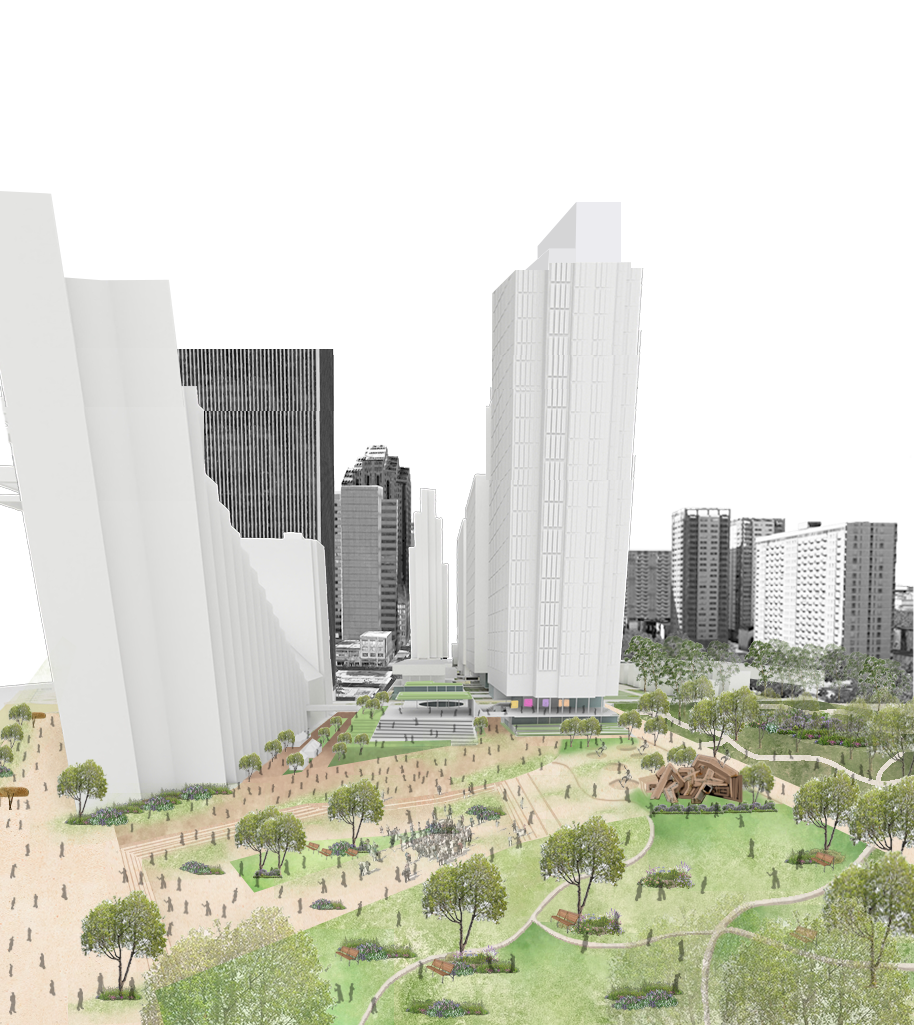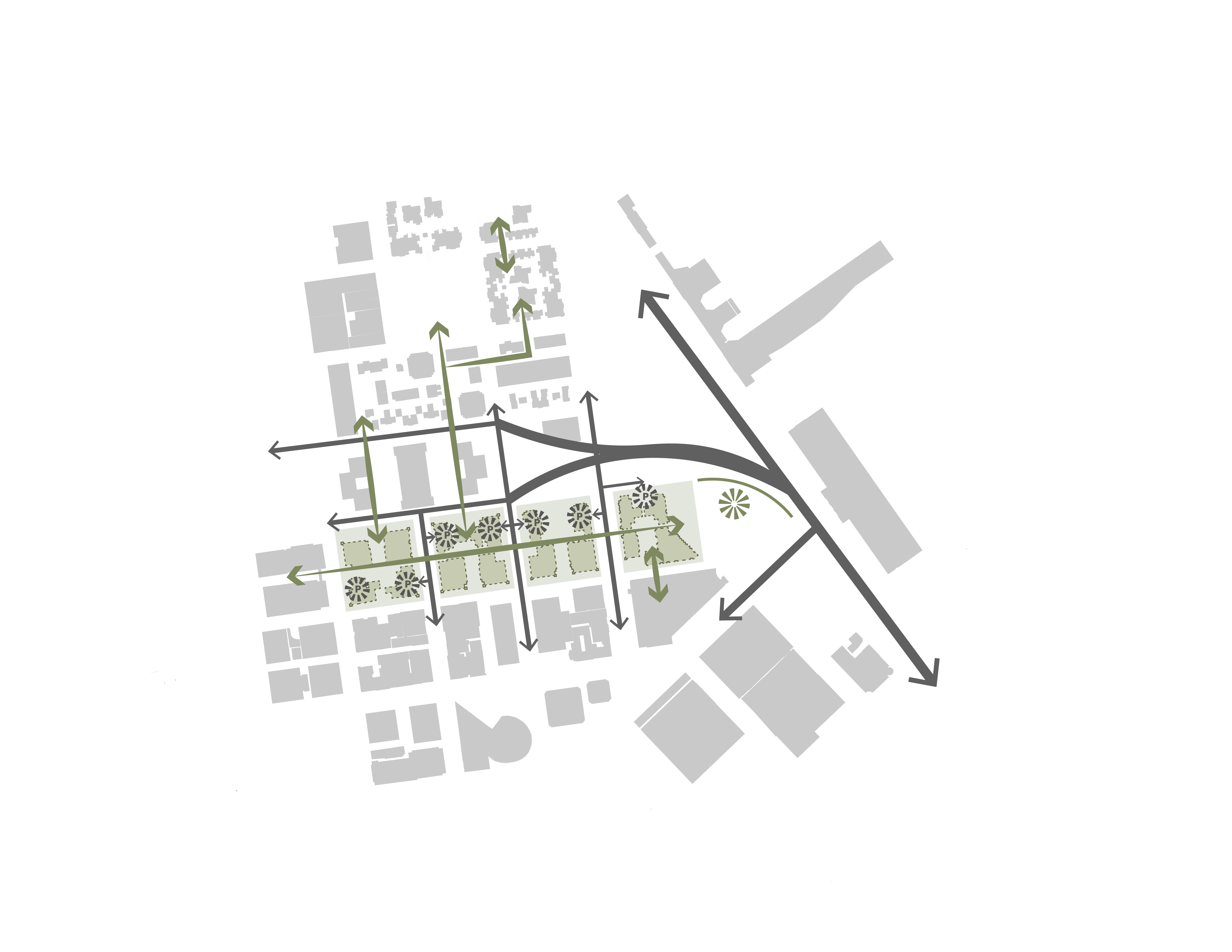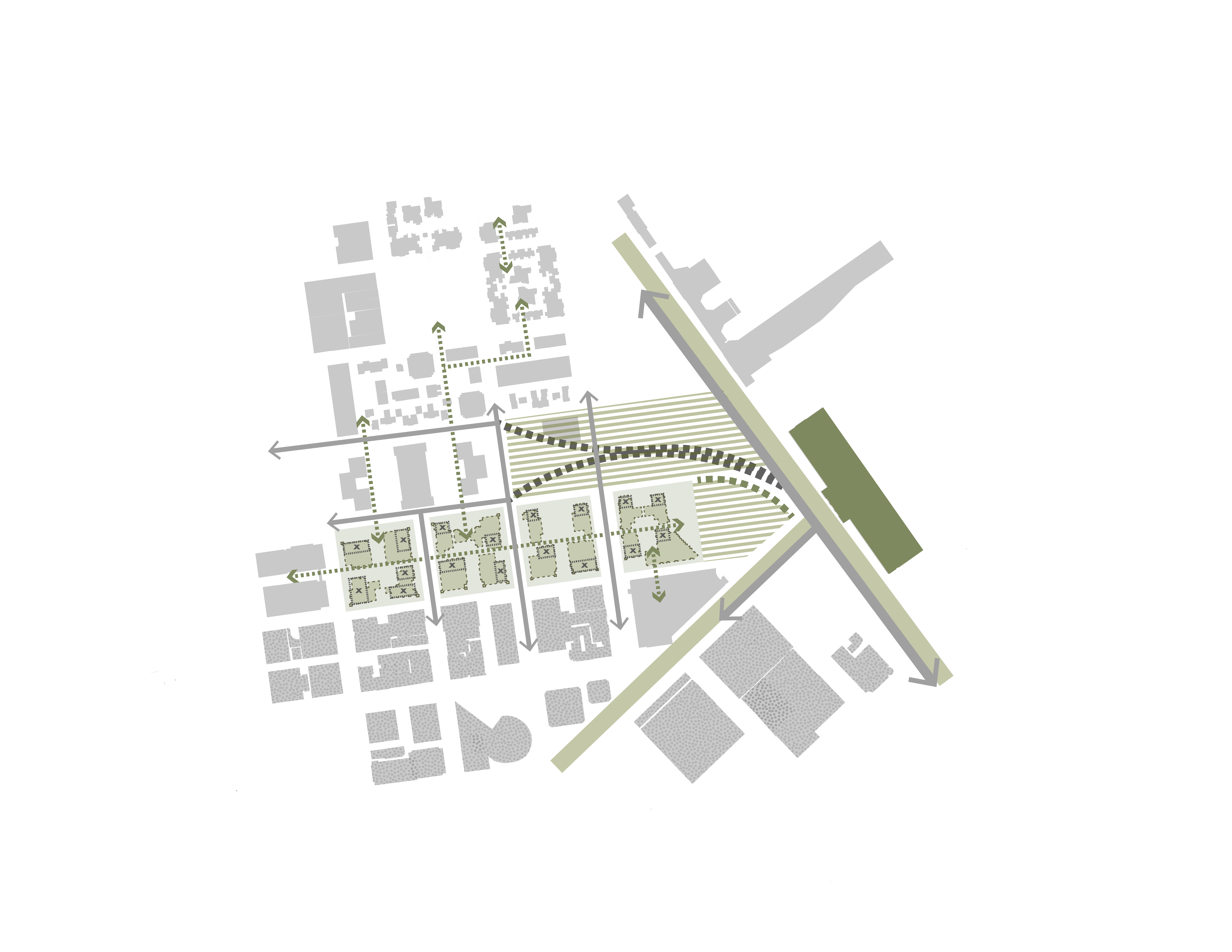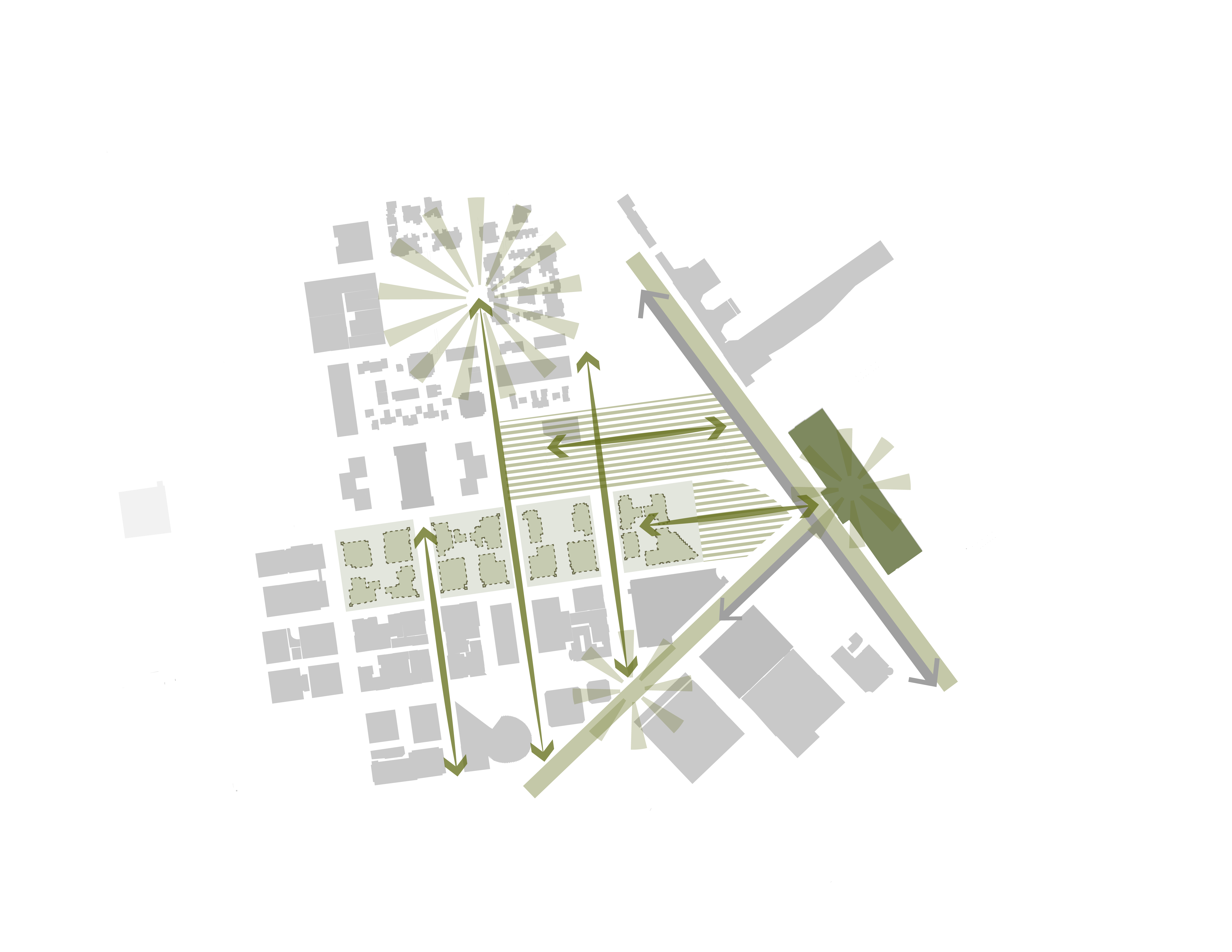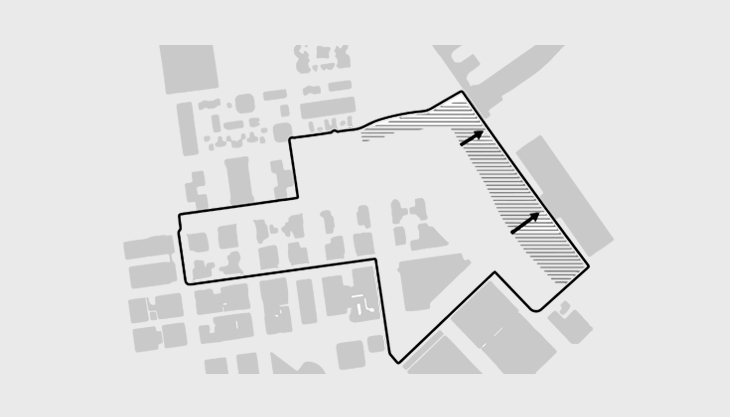
Embarcadero Center Effect: Stitching downtown San Francisco through the transformation of Embarcadero Center’s lower levels
Cities are here to stay. They represent not only physical infrastructure but also deep social, economic, and cultural investments. Therefore, maintaining and adapting urban environments to address contemporary urban challenges is essential.
Downtowns, in particular, play a critical role in this effort. While occupying a small fraction of urban land, they contribute greatly to economic output. As ever-evolving urban codes, downtowns have followed varied trajectories: some, like San Jose and Houston, have seen steady growth; others, like Detroit, have endured long-term decline and struggled to recover. A third category emerged in the late 20th century—cities like Lower Manhattan, Los Angeles, and Seattle—that experienced decline but later achieved significant revitalization.
Could San Francisco follow a similar path toward resurgence too? Could it evolve from an agglomeration of single-use office towers into a vibrant community? With office vacancy rates now reaching a historic high of 35.9%, the city’s overdependence on office-based activity has exposed it to economic shocks triggered by remote work and pandemic-related disruptions.
Recent global events have brought downtown revitalization back to the forefront of urban discourse. Still, a pressing question remains: What defines a resilient and sustainable downtown?
San Francisco has begun taking steps in this direction, implementing small-scale placemaking initiatives and exploring office-to-residential conversions. However, these efforts often operate in silos, lacking a cohesive framework with a broader
vision for the city. As Chinese-American geographer Yi-Fu Tuan insightfully asks: “And how can we envisage a good life and plan for the future unless we have some clear idea as to the sort of places that we wish to exist?” This question lies at the heart of this design thesis.
This project is part of my final design thesis at the University of California, Berkeley (UCB), completed as part of my Master of Urban Design (MUD) program. It explores the concept of urban flows as a design tool to create a more connected city.
Embarcadero Center as a Catalyst
This design thesis positions the Embarcadero Center complex as a catalyst for broader downtown revitalization. By reimagining the complex’s lower levels—from a shopping mall into a mixed-use community—the project aims to repair disconnected urban flows and help stitch the city’s core back together.
Part of the larger Golden Gateway project, including the Hyatt Regency and Golden Gateway Apartments, the Embarcadero Center represents a pivotal moment in San Francisco’s urban history. It was designed in response to the surrounding context serving as a connector for cars and people.
Fast forward to today: much has changed that shifted the spatial dynamics affecting the performance of the lower levels and the experience in the neighborhood. Once an iconic piece of infrastructure and a connector, it now struggles to engage with its surroundings—an area also undergoing significant transformation. The demolition of the freeway, the decline of retail, reduced foot traffic, the impact of Covid-19, and more recent developments such as discussions around the redevelopment of Embarcadero Plaza and projected waterfront rise of 3.5 ft to possibly 7-10 ft by end of the century, put Embarcadero Center in the middle of a great opportunity – to prototype a new downtown neighborhood that reinvents live, work and play.
The Embarcadero Center Effect becomes both a catalyst for downtown revitalization and a guiding vision: how can we design for a connected city in a sustainable way?
Moving forward
Downtown revitalization has sparked countless strategies—from planning upgrades and policy shifts to adaptive reuse, office-to-residential conversions, programmatic changes, and small-scale public realm interventions. But at the heart of it all lies a fundamental question: what makes a great city? And more importantly, what broader vision connects all these fragmented, granular interventions?
For me, the answer is a connected city—one defined by its flows.
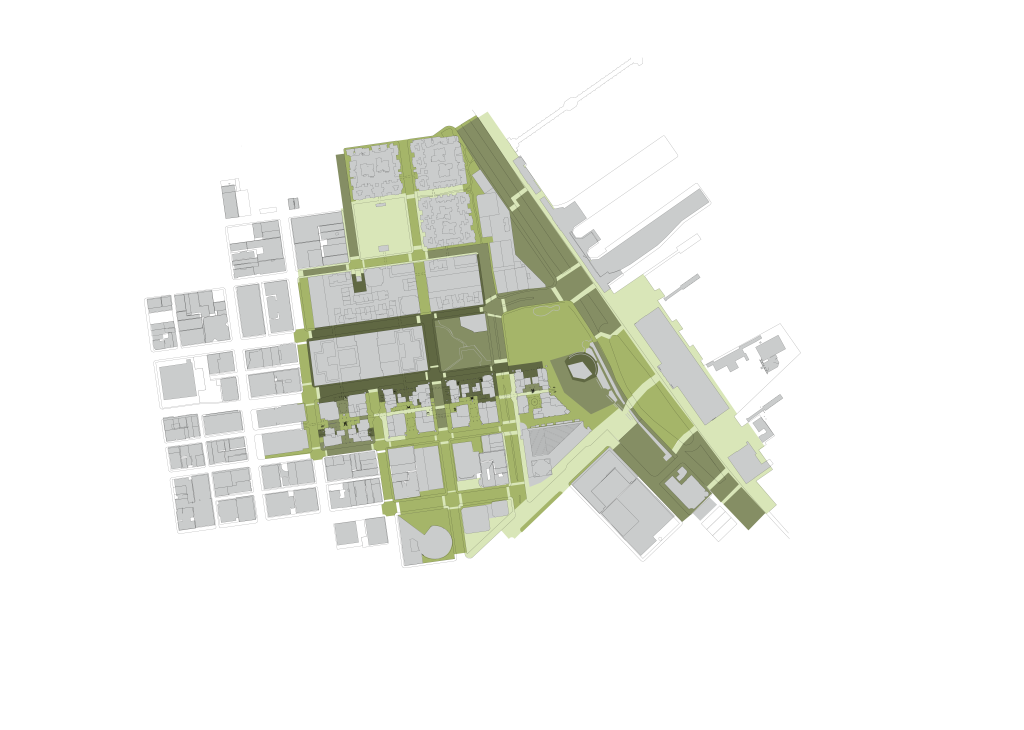
San Francisco, with its compact urban form and variety of street typologies—including alleys, elevated walkways and parks, underground corridors and so many more—offers a great opportunity to study, create, and repair these flows. My thesis on the Embarcadero Center pushed me to think beyond a single block and toward the larger systems that shape this part of the City. I studied flows across multiple scales: district, neighborhood and local; wide enough to grasp the city’s structure, yet close enough to understand the more social and spatial disconnections.
By following this methodology of repair, we can set the foundation for site-specific interventions – but not the other way around. Only with this layered, systems-first approach can a larger vision become attainable. A vision for a connected city – one that rethinks how high-rises engage with the street, what new uses to bring in, how conversions might target just the lower levels rather than entire towers and how we can animate inactive streets to foster life and community.
Read the full report and design strategies below:
